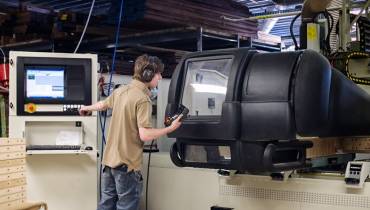Standing While Working Isn't That Much Better Than Sitting, Studies Show

Some of us have sedentary desk jobs where we spend most of the day seated in front of a computer working. Reading and writing and creating on a computer constitutes a big chunk of sedentary time. If you are reading this article while seated and you’ve been sitting for a while, you might want to stand up for a moment because leading a sedentary life can have serious repercussions.
Studies conducted over the past decade suggest that too much sitting doubles the risk of diabetes and heart disease, leads to more disability in older people, and could even shorten your lifespan. One Harvard study involving more than 92,000 women found the more time participants spent sitting at work, driving, or watching TV, the greater their risk of dying from heart disease, cancer or strokes.
Unseated yet?
Sitting seems to shut off the circulation of a fat-absorbing enzyme called lipase, says Marc Hamilton, PhD., a microbiologist at the Pennington Biomedical Research Center. Specifically, sitting burns 1.02 calories a minute, while standing burns 1.36 calories a minute. This equates to 160 extra calories burned per day. It is news such as this that has contributed to the sharp rise in the use of standing desks at work. And when celebrities and public figures pick up a trend, you know it’s on.
Victoria Beckham was pictured testing out a treadmill desk and Sheryl Sandberg has been known to use one. In the past, dynamic individuals like Winston Churchill, Benjamin Franklin, Ernest Hemingway and Leonardo da Vinci were big advocates of the standing desk. Meanwhile, 90% of Scandinavia’s working population has been on its feet at work for years.
Many people who have made the switch to the standing desk and enjoy working while standing say they see huge benefits, including improved metabolism, significant weight loss, enhanced focus, and increased energy levels. But here’s the rub: standing all day when working, as an alternative to sitting all day, may not be that great for you either.

Hemingway working while standing.
The problem with standing too much when working
Hours of uninterrupted standing can cause a host of problems among them wear on the knees and ankles, abnormally swollen or knotty veins (varicose veins), narrowing of arteries in the neck and carpal tunnel syndrome. Alan Hedge, who directs the Human Factors and Ergonomics research and teaching programs at Cornell University, explains:
“Standing to work has long been known to be problematic, it is more tiring, it dramatically increases the risks of carotid atherosclerosis (ninefold) because of the additional load on the circulatory system, and it also increases the risks of varicose veins, so standing all day is unhealthy.
The performance of many fine motor skills also is less good when people stand rather than sit. We have tested computer use when sitting and standing in different ways. The problem with standing is that when you raise desk height for keyboard/mouse use you need to also raise screen height above the desk or you get neck flexion.
Also, for standing computer work, the computer fixes the person’s posture, there is greater wrist extension and pretty soon people end up leaning which also compromises their wrist posture, thereby increasing the risks of a musculoskeletal disorder like carpal tunnel syndrome.”
More than that, many of us find that as we get older we like sitting down, well, a lot more. I, personally, don’t actually want to be standing all day. I quite fancy my comfy office desk and chair when doing my keyboard work. And besides, a cup of coffee or tea just isn’t the same drunk standing up.
A compromise for sitting (and standing) for hours when working
Unless you want to expose yourself to the dangers of too much sitting or standing while working, you need to find a viable middle ground. Possible compromise? Sit, but get up and move around every 20 minutes or so, says Hedge. When on your feet, stand in one position for no more than 8 minutes and also take a two-minute moving break at least twice an hour to stretch or walk around.
The Cornell Ergonomics lab advices:
"Every 20 minutes stand for 2 minutes AND MOVE.
The absolute time isn’t critical but about every 20-30 minutes take a posture break and move for a couple of minutes. … Movement is important to get blood circulation through the muscles. And movement is FREE! Research shows that you don’t need to do vigorous exercise (e.g. jumping jacks) to get the benefits, just walking around is sufficient. So build in a pattern of creating greater movement variety in the workplace (e.g., walk to a printer, water fountain, stand for a meeting, take the stairs, walk around the floor, park a bit farther away from the building each day)."
The compromise may not be as popular as the stand-up desk, but if you have a sedentary desk job, Hedge’s advice is probably best for your body.
Image credit: ramsey beyer/flickr




















![The Benefits of Coolsculpting Procedures for Fat Reduction [node:title]](/sites/default/files/styles/video_thumbnail_bottom/public/man-hand-holding-tummy-body-fat.jpeg?itok=QrJspN6u)